How To Implement Agile Modeling In Retail: Streamlining Complex Operations For Faster Results

The retail industry has become increasingly dynamic and complex. From managing inventory across multiple stores to ensuring a seamless customer experience both online and offline, retail businesses face constant challenges that demand fast, accurate decision-making and efficient process coordination.
Agile modeling, a component of the broader Agile methodology, offers a practical way for retail teams to visualize workflows, adapt quickly to changes, and collaborate effectively, making it easier to keep up with market demands.
To better understand how Agile modeling in retail can tackle these challenges and improve your operations, let’s explore its core concepts, benefits, and practical steps for implementation.
Why Teams Need Agile Modeling in Retail
Agile modeling in retail refers to a flexible approach for designing and managing business processes and projects using visual, lightweight models. These models focus on the critical steps, tasks, and roles involved in retail operations without getting bogged down by excessive documentation.
Agile modeling helps retail teams communicate clearly and adapt their workflows rapidly as priorities shift, a must-have in an environment where trends and customer preferences can change overnight.
To get started quickly, retail teams can use ready-made tools like the retail promotion calendar template. This template provides a visual, easy-to-adapt workflow that helps teams plan and adjust promotions efficiently, ensuring alignment and responsiveness to market changes.
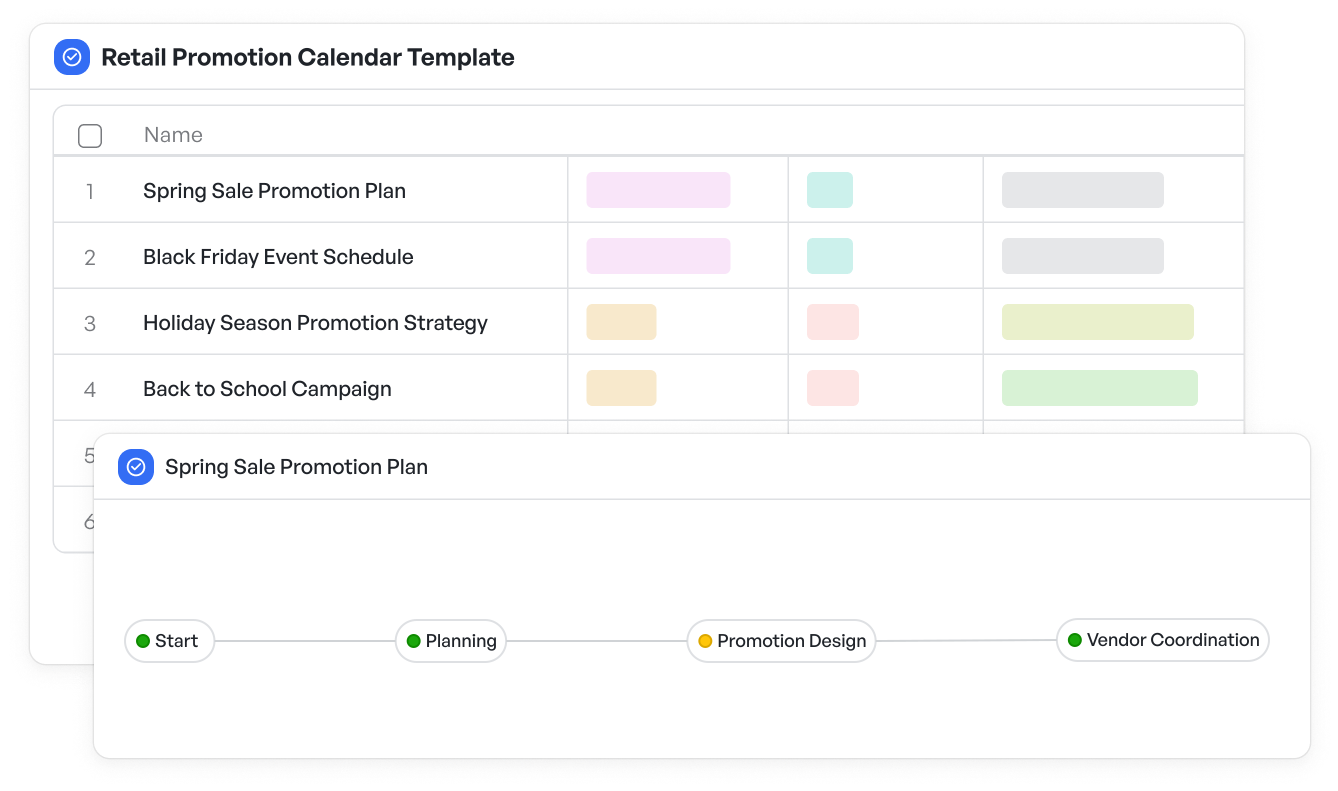 Retail promotion calendar template helps teams plan and track retail promotions visually
Retail promotion calendar template helps teams plan and track retail promotions visuallyHow Agile Modeling in Retail Solves Common Workflow Issues
Retail businesses juggle many moving parts, such as supply chain optimization and store operations, marketing campaigns, customer service and many more.
Agile modeling offers a way to map these processes visually, providing transparency for every team member. This visibility helps reduce miscommunication, align teams faster, and analyze bottlenecks before they impact the customer.
For example, using a retail supply chain efficiency tracker template or a retail promotion calendar template can make it easier for teams to visualize workflows, coordinate tasks, and keep everyone on the same page.
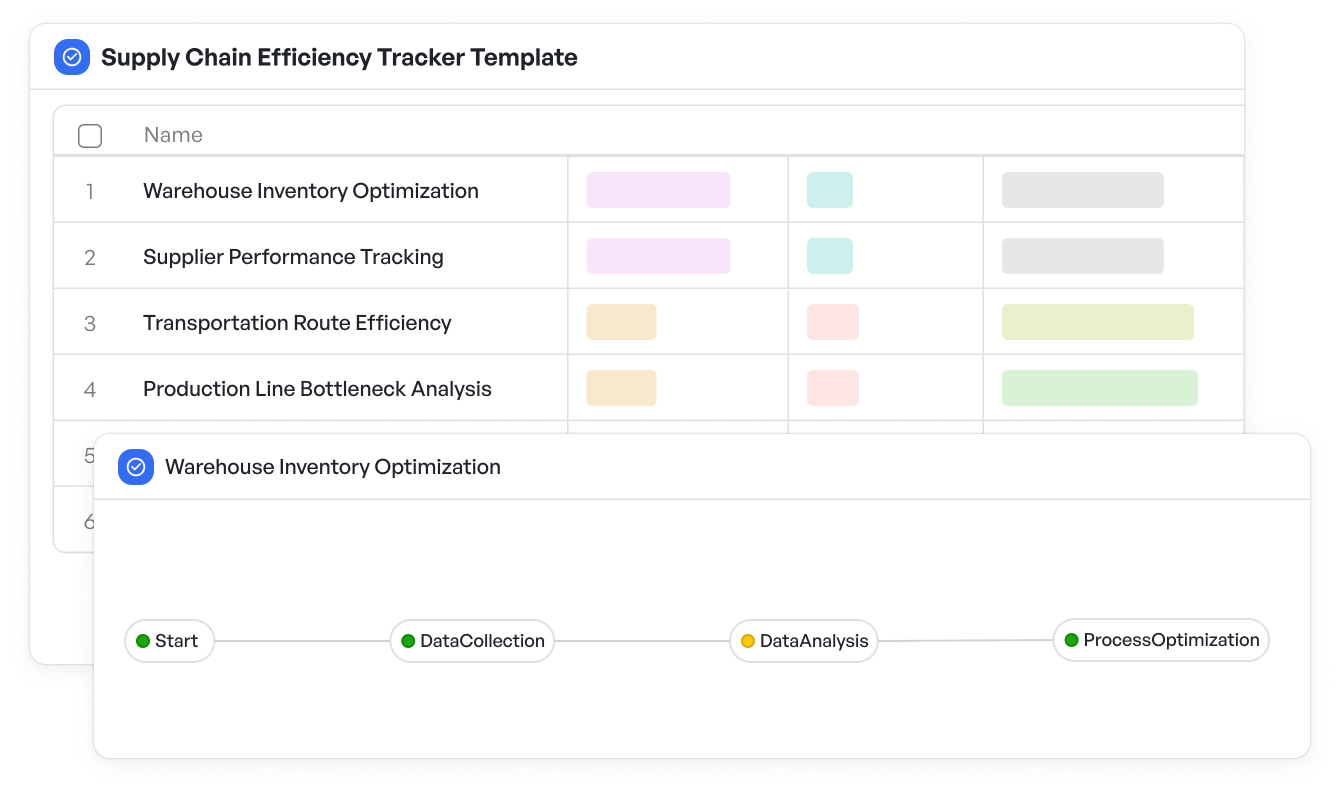 Helps the team visualize workflows and improve coordination across retail operations
Helps the team visualize workflows and improve coordination across retail operations5 Key Steps to Implement Agile Modeling in Retail
To get started with Agile modeling in retail, organizations should focus on the following steps:
1. Identify Core Retail Processes To Model
Begin with high-impact areas such as inventory replenishment, order fulfillment, or promotional campaign execution.
For example, using a retail inventory management template can provide a clear visual framework to map and track inventory flow efficiently.
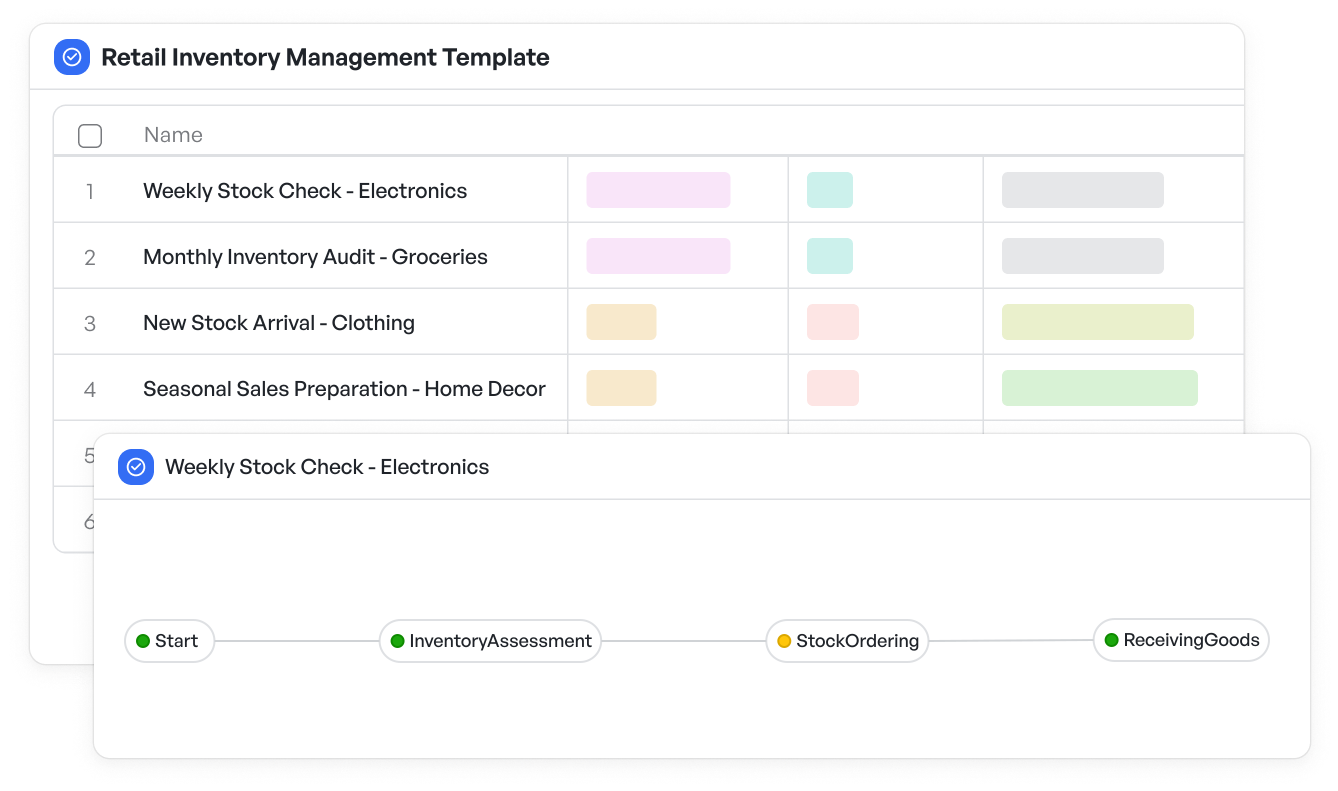 Visualize and streamline stock replenishment and tracking workflows for better inventory control
Visualize and streamline stock replenishment and tracking workflows for better inventory control2. Use Visual Workflow Tools
Choose visual workflows that enable easy creation, editing, and sharing of process diagrams so teams stay aligned.
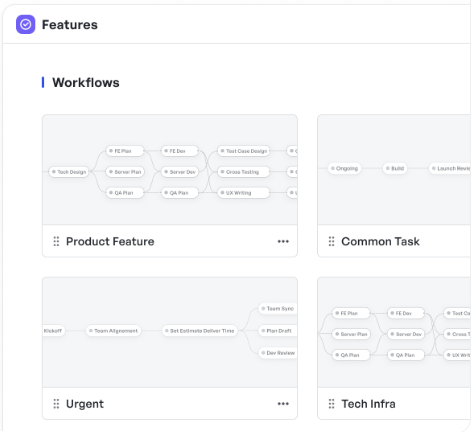 Workflow visualization in Meegle
Workflow visualization in MeegleSuggested Read:👉7 Best Visual Project management software 2025
3. Engage Stakeholders Across Teams
Engage representatives from sales, supply chain, IT, and customer service to ensure the model accurately reflects real-world processes.
4. Iterate And Refine Regularly
Consider models as living documents that continuously evolve based on feedback and real-world performance.
5. Train Teams On Agile Principles
Train staff on the benefits of flexibility, collaboration, and continuous improvement in process management.
This approach allows retail businesses to simplify complexity without sacrificing detail, providing a clear roadmap for all participants.
Retail Processes Improved by Agile Modeling in Retail
Agile modeling can support a wide range of retail operations. Some examples include:
Inventory Management Workflows
Visualize the flow from supplier orders through warehouse receipt to store replenishment, identifying delays or inaccuracies early.
One practical way Agile modeling supports retail inventory management is through ready-to-use tools like the retail inventory management template.
It helps visualize and streamline stock replenishment and order tracking, reducing the risk of stockouts and improving overall efficiency. Retail teams can customize workflows to fit their specific needs, ensuring accurate inventory levels and smoother operations.
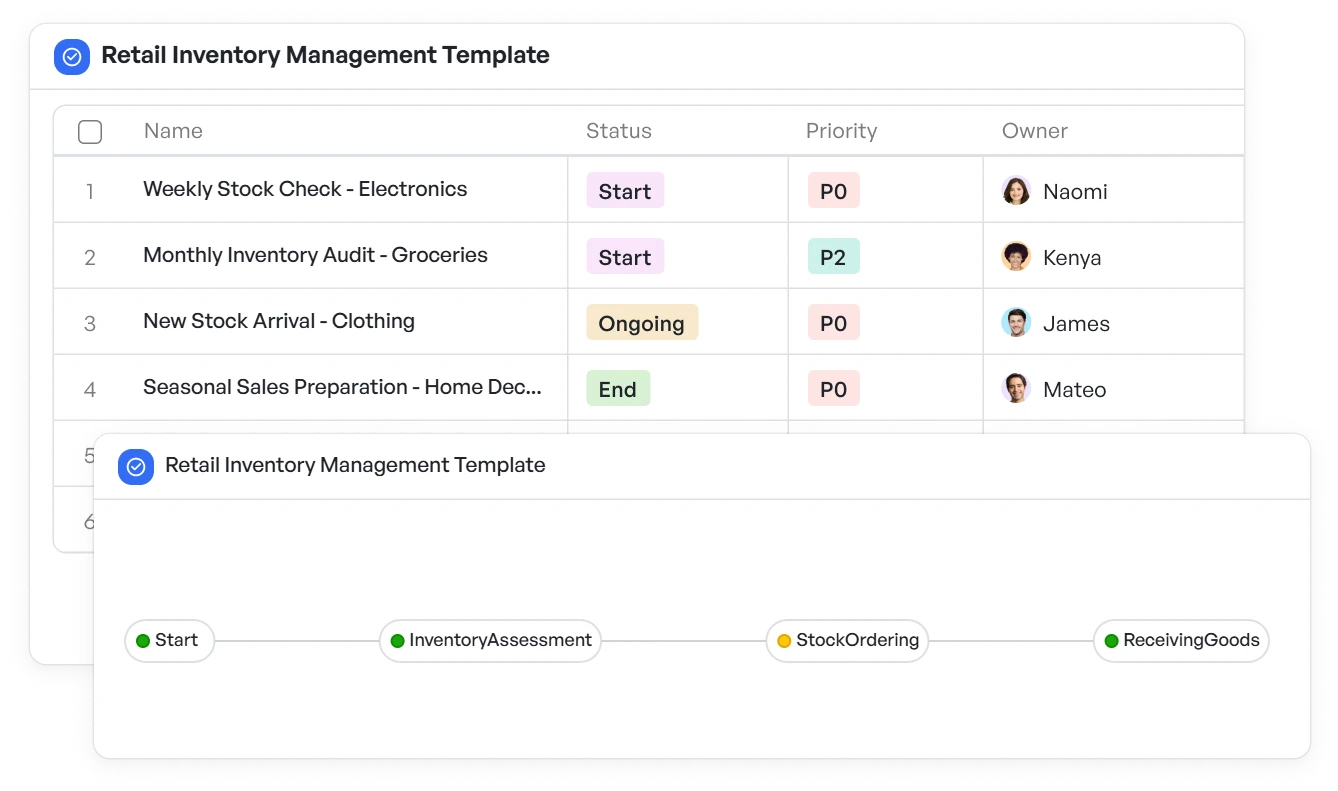 Visualize and manage retail inventory flows effortlessly with the retail inventory management template
Visualize and manage retail inventory flows effortlessly with the retail inventory management templateCustomer Journey Mapping
Model the steps a customer takes from browsing to purchase and post-sale support, ensuring smooth transitions across channels.
Using tools like the retail customer journey map template, retail teams can visualize each touchpoint clearly, identify friction areas, and coordinate efforts across marketing, sales, and support teams to enhance overall customer experience.
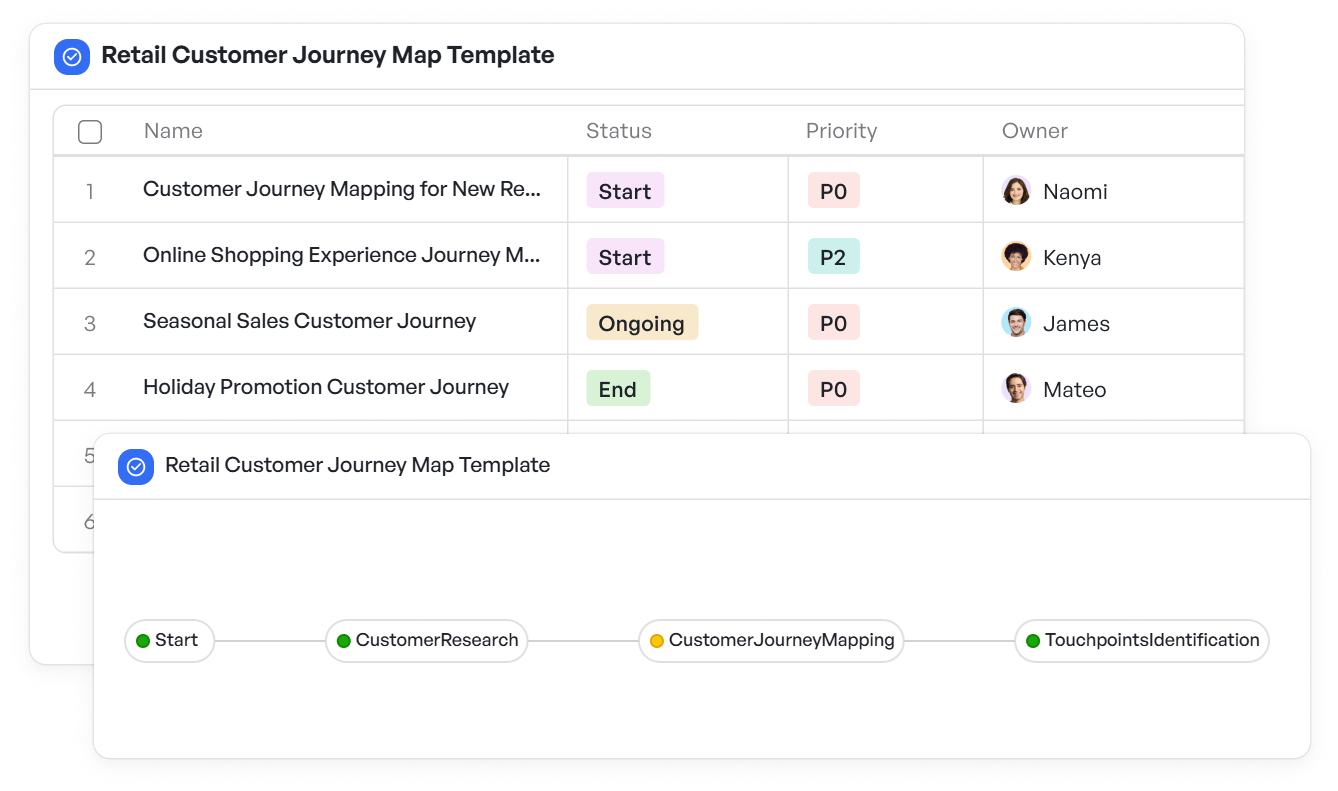 Visualize every step of the customer journey to improve engagement and ensure seamless experiences across channels
Visualize every step of the customer journey to improve engagement and ensure seamless experiences across channelsMarketing Campaign Planning
Coordinate timing, resource allocation, and content approval among marketing, creative, and sales teams using the retail marketing campaign template, which helps visualize campaign workflows, assign responsibilities, and track progress to ensure smooth execution.
Returns And Refund Processes
Clearly define roles and checkpoints to speed up approvals and enhance customer satisfaction.
Each of these use cases benefits from the transparency and adaptability that Agile modeling delivers.
Overcoming Challenges in Agile Modeling in Retail
While Agile modeling brings many advantages, retailers may face hurdles such as:
- Resistance to change: Teams accustomed to traditional processes may hesitate to adopt new visual tools and Agile methods.
- Complex legacy systems: Integrating Agile models with existing software and workflows can be difficult.
- Maintaining up-to-date models: Without discipline, visual workflows can become outdated and lose value.
Addressing these challenges requires strong leadership support, clear communication about benefits, and selecting user-friendly tools that balance power and simplicity.
The Value Agile Modeling in Retail Brings to Your Business
Agile modeling in retail helps teams keep pace with shifting demands by providing clear, flexible process visualization that improves communication and accelerates delivery.
When retail businesses adopt this approach, they gain the ability to respond more quickly, collaborate more effectively, and mitigate risks, all of which are essential for staying competitive today.
For retailers seeking an intuitive way to implement Agile modeling and optimize their workflows, Meegle offers a balanced solution that combines ease of use with powerful capabilities.
Build your workflow today!
The world’s #1 visualized project management tool
Powered by the next gen visual workflow engineRead More
Check All BlogsStart creating impactful work today



